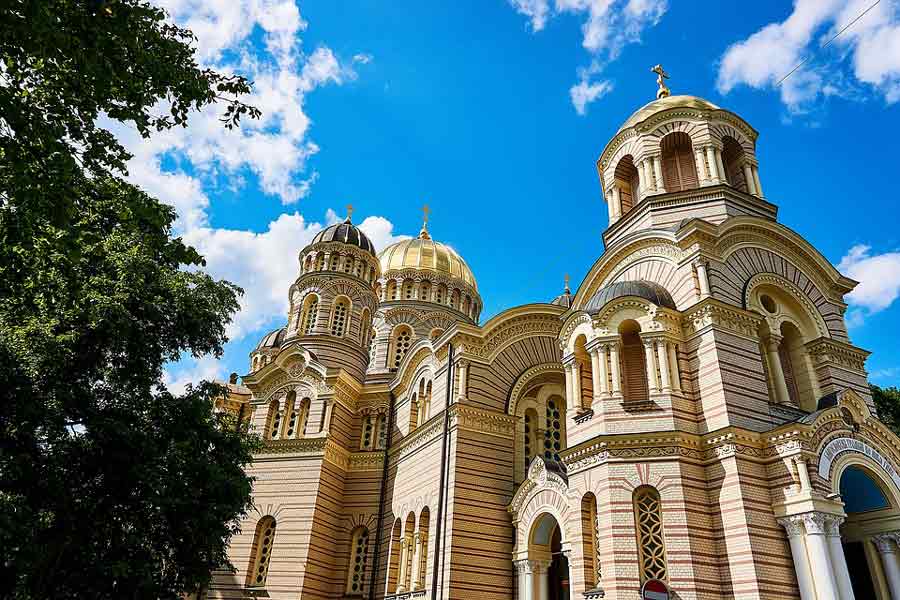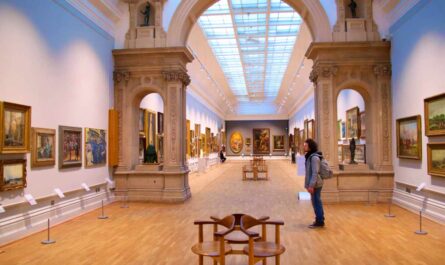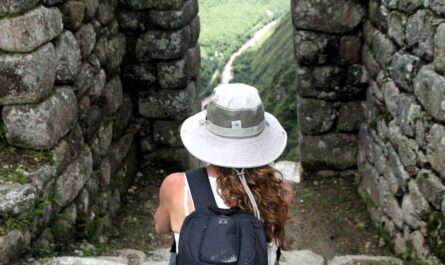There are a lot of interesting facts about Latvia. Situated in northeastern Europe, Latvia holds a unique position among the trio of Baltic states. Emerging from a tumultuous past, Latvia’s journey to independence is a tale of resilience and determination. The nation declared its autonomy on August 21, 1991, following decades of Soviet occupation since June 1940. Acknowledgment of its sovereignty by the Soviet Union on September 6 marked a pivotal moment in Latvian history, paving the way for international recognition, including membership in the United Nations. We will share many more cool fun interesting facts about Latvia fun interesting facts for you, keep reading.
Interesting facts about Latvia
Latvia’s integration into prominent global bodies such as the North Atlantic Treaty Organization (NATO) and the European Union (EU) in 2004 signified a significant milestone in its trajectory towards modernization and global engagement. At the heart of this nation lies Riga, its vibrant capital and largest city, serving as a cultural, economic, and political hub. Here are some very interesting facts about Latvia!
1. Discovering the Jurkalne Bluffs
The Jurkalne Bluffs, situated approximately 12.45 miles (20 kilometers) north of the quaint fishing village of Pvilosta, present a captivating landscape along the Latvian coastline. Named after the Latvian term for “Sea Mountain,” Jurkalne features a collection of softly rounded bluffs, some reaching heights of up to 65.6 feet (20 meters). This distinctive geographical formation contributes to Jurkalne’s reputation as one of Latvia’s most scenic beaches.
Characterized by its steep shoreline sculpted by powerful winds and adorned with towering dunes, Jurkalne attracts adventurous enthusiasts such as paragliders and kite surfers. Despite its natural allure and recreational opportunities, the expansive shoreline of Jurkalne often remains blissfully deserted, offering visitors a serene and uninterrupted connection with nature’s beauty.
2. Savoring Latvian Cuisine: Beyond the Pelkie Ziri
While the pelkie ziri, reminiscent of chickpeas and cooked with savory smoked bacon, may capture attention with its distinctive flavor, Latvia’s culinary charm extends far beyond this traditional dish. Central to Latvian gastronomy is the revered rupjmaize, or dark rye bread, celebrated for its rich taste and versatility. A must-try for visitors is kvass, a refreshing beverage deeply rooted in Latvian heritage, crafted from fermented rye bread and reminiscent of beer albeit with minimal alcohol content, typically under 1%.
Delving deeper into Latvia’s culinary repertoire, one encounters maizes zupa, a hearty chilled soup featuring sweetened dark rye bread, infused with water, dried fruits, and finished with a touch of cream. Such culinary delights offer a tantalizing glimpse into Latvia’s culinary heritage, enticing visitors with a fusion of flavors that reflect the nation’s cultural depth and ingenuity.
3. Unveiling the Origins of Christmas Traditions in Riga
The timeless tradition of adorning Christmas trees finds its origins intertwined with the historic city of Riga, Latvia. Dating back to the era of the Brotherhood of Blackheads, a prominent German trading organization that thrived in Riga from 1334 to 1939, the roots of this cherished custom are deeply embedded in the city’s cultural tapestry. Within the annals of the Brotherhood’s records lies a treasure trove of information detailing the 1510th winter celebration, marked by the embellishment of a towering evergreen with a kaleidoscope of festive adornments.
From ribbon bouquets to dried flowers, straw figurines, intricate weaving, and bountiful fruits, the Christmas tree served as a symbol of joy and festivity, captivating hearts and minds alike. Riga’s role as the birthplace of this beloved tradition endows the city with a timeless charm, beckoning visitors to partake in the magic of the holiday season amidst its historic streets.
The Baltic Way: A Symbol of Unity and Resistance
On August 23, 1989, a remarkable demonstration of solidarity unfolded as two million individuals from Estonia, Latvia, and Lithuania joined hands to protest against the oppressive Soviet occupation. Spanning a distance of 600 kilometers, this human chain connected the capitals of all three Baltic countries, symbolizing a unified front in their struggle for independence. The collective effort of these courageous individuals played a pivotal role in the eventual dismantling of the Soviet Union, marking a watershed moment in history. Recognizing its profound significance, UNESCO has immortalized this extraordinary event by inscribing it in the Memory of the World Register, ensuring that its legacy endures for generations to come.
4. Riga: Where Heritage and Innovation Intersect
Riga’s historic center stands as a testament to the city’s rich architectural heritage, notably exemplified by its stunning Art Nouveau buildings. However, amidst the well-known landmarks lies a lesser-known treasure: the Struve Geodetic Arc, a UNESCO World Heritage site shared by multiple nations including Estonia, Latvia, Lithuania, and others. This extraordinary arc comprises a series of meticulously conducted survey triangulations stretching from Hammerfest, Norway, to the Black Sea, marking a significant milestone in the history of geodesy by providing the first accurate measurement of the meridian. Riga’s dual distinction as a hub of artistic expression and scientific achievement underscores its multifaceted cultural significance on the global stage.
5. Cinematic Splendor in Latvia and Lithuania
The recent adaptation of Leo Tolstoy’s epic masterpiece, War and Peace, by the BBC, provided an opportunity for Latvia and Lithuania to showcase their cinematic prowess on an international platform. Among the myriad breathtaking locales featured in the series, the Rundle Palace emerged as a standout attraction, captivating audiences with its grandeur and historical significance. Described by travel expert John Gimlette as a “stunning structure” reminiscent of Versailles with its majestic saffron-yellow façade, the palace’s construction epitomized opulence and extravagance.
With its origins dating back to 1730 and employing thousands of artisans and vast quantities of materials, including millions of bricks and thousands of planks, the palace stands as a testament to the grandeur of bygone eras. The enduring legacy of the palace is further enriched by the presence of Napoleonic relics, including the names of French troops etched into its walls, preserving a tangible connection to a pivotal moment in history.
6. Exploring Kurzeme: Latvia’s Untouched Coastal Gem
Kurzeme, nestled along Latvia’s western coastline, presents a serene retreat just a three-hour drive from the bustling capital of Riga. During the Soviet era, this coastal stretch served as a closely monitored border, limiting development and preserving miles of pristine natural beauty along its rugged, mountainous terrain. Today, Kurzeme stands as a testament to Latvia’s untouched landscapes, offering visitors a glimpse of breathtaking vistas and unspoiled shorelines.
7. Liepja Seaside Park: A Tranquil Oasis
Amidst Kurzeme’s tranquil expanse lies the renowned Liepja Seaside Park, stretching 1.8 miles (3 kilometers) along the coast. This Blue Flag beach, among the largest wooded parks in Latvia, beckons travelers with its pristine sands and verdant surroundings. As one of the region’s most prominent coastal villages, Liepja Seaside Park serves as a sanctuary for nature enthusiasts and beachgoers alike, offering a tranquil escape from the hustle and bustle of urban life.
8. Karosta: Where History Meets Natural Splendor
Just a short drive from Liepja Seaside Park, the remote sands of Karosta unveil a captivating blend of natural wonders and historical intrigue. Along the Baltic Coast, the Northern Forts stand as a testament to Latvia’s rich maritime heritage. Originally constructed as part of the Naval Port’s fortifications, these abandoned bunkers offer a glimpse into Latvia’s tumultuous past. Despite Tsar Nicholas II’s decision to dismantle much of the facility in 1908, the resilient bunkers defiantly weathered the test of time. Today, as these remnants crumble into the sea, they serve as poignant reminders of Latvia’s resilience and enduring allure, captivating the imaginations of visitors from around the globe.

9. The Baltic Distinction
The distinction between Latvians and Slavs is essential to understanding the cultural tapestry of the Baltic region. Unlike Slavs, who are an ethnic group, Latvians belong to a different cultural and linguistic background. While “Slavic” is a term used to describe people of Slavic descent, “Nordic” pertains to a geographical region encompassing countries like Sweden, Norway, and Denmark. Despite not being commonly categorized as Nordic, the Baltics, including Latvia, hold a unique position within this broader framework. Their history, language, and cultural heritage contribute to their distinct identity within the Baltic and wider European context.
10. Historical Identity: Lettland to Latvia
The historical evolution of Latvia’s name and identity adds layers to its cultural narrative. Once referred to as “Lettland,” the country bore the name associated with its indigenous people, the Letts. This nomenclature persisted until the 13th century when the Livonian Brothers of the Sword, a group of German knights, asserted control over the region. Their influence marked a significant shift, leading to the renaming of the land and its inhabitants. The transition from Lettland to Latvia reflects the complex interplay of indigenous cultures and external forces that have shaped the nation’s identity over centuries.
11. Latvian Russians: A Cultural Mosaic
Within Latvia’s diverse demographic landscape, Latvian Russians constitute a significant segment of the population. Comprising one out of every four individuals in the country, they contribute to the multicultural fabric of Latvian society. Predominantly concentrated in urban centers such as Riga, Daugavpils, and Rzekne, Latvian Russians bring their distinct language, traditions, and perspectives to the national tableau. Despite the prevalence of the Latvian language as the official tongue, Russian remains the most widely spoken and understood minority language, reflecting the intricate interplay between different ethnic communities within Latvia’s borders.
12. Riga: Jewel of the Baltic
Riga stands proudly as the capital and largest city of Latvia, situated majestically along the banks of the Daugava River, approximately 9 miles (15 kilometers) from its confluence with the Gulf of Riga. Its strategic location has made it a vital hub of commerce, culture, and history in the Baltic region.
13. Well-Connected Latvia
Latvia boasts a surprisingly well-connected transportation network, facilitating seamless travel within the country and beyond. Despite its relatively modest size, Latvia offers modern and cost-effective transportation options. The international airport serves as a gateway to the world, connecting Latvia to numerous destinations across the globe. Additionally, Lux Express provides budget-friendly bus services, linking Riga to prominent cities like Saint Petersburg, Moscow, Minsk, and Warsaw. For those seeking a maritime adventure, overnight ships ply the waters between Riga and Stockholm, offering spacious sleeping accommodations for travelers, presenting an enticing option for exploration and adventure.
14. Latvian Tragedy: A Legacy of War
The Second World War left an indelible mark on Latvia, with devastating consequences for its population. Tragically, an estimated 12.5% of Latvia’s inhabitants perished during this tumultuous period, marking one of the highest proportions of casualties among European nations, second only to Poland and Lithuania. The horrors of war extended beyond the battlefield, as many Latvians endured further suffering in Soviet gulags between 1945 and 1952. Up to 190,000 individuals faced imprisonment in these labor camps, highlighting the enduring scars left by conflict and oppression on Latvia’s collective memory.
15. Beach Bliss: Latvia’s Coastal Charm
Despite its northern location, Latvia offers a surprising haven for beach enthusiasts, boasting an impressive stretch of sandy coastline spanning 330 kilometers. For those seeking an unconventional beach vacation, Latvia’s shores present an enticing option, provided one can brave the chilly waters. Jurmala, situated just west of Riga, emerges as a popular summer retreat, once frequented by notable figures like Brezhnev and Khrushchev. During the peak of summer, temperatures can rise to a comfortable 20°C, inviting sunseekers to bask in the coastal splendor while donning ample sunscreen.
16. Connectivity at its Finest: Latvian Internet
In the realm of digital connectivity, Latvia shines as a beacon of technological prowess, boasting some of the fastest internet speeds worldwide. With an average download speed of 13.8 megabytes per second (MB/s), Latvia surpasses major global players such as the United Kingdom, the United States, France, Brazil, and Egypt. This remarkable feat underscores Latvia’s commitment to technological innovation and its status as a leading player in the digital landscape, providing its citizens and visitors with swift and reliable internet access for seamless connectivity and communication.
17. Living Affordability in Latvia
In contrast to the expensive lifestyle prevalent in Western Europe, Latvia emerges as an oasis of affordability. This Baltic nation beckons expatriates seeking to maintain high living standards without straining their budgets. Whether it’s accommodation, daily expenses, or leisure activities, Latvia offers a plethora of options that won’t break the bank. Particularly in Riga, the capital city, dining out becomes an accessible luxury, with restaurants presenting enticing set dinners for as little as €8. Such affordability not only attracts expatriates but also fosters a diverse community of locals and internationals, creating a vibrant tapestry of cultures and experiences within Latvia’s borders.
18. Symbolism of the Latvian Flag
The Latvian flag, with its simple yet evocative design, encapsulates the nation’s rich history and values. Comprising three horizontal stripes, each hue carries profound symbolism. At the top and bottom, chestnut-colored stripes symbolize Latvia’s fertile soil and enduring resilience. Meanwhile, the pristine white stripe nestled between represents the nation’s aspirations for peace and freedom. Beyond its aesthetic appeal, the flag serves as a potent emblem of Latvian identity, invoking feelings of unity, patriotism, and hope among its citizens and observers alike. If you feel like visiting the country, don’t hesitate to book your lodging with cozycozy, where you can compare all types of accommodation and prices!
19. Ensuring Safety in Latvia
While Latvia boasts enchanting landscapes and a vibrant cultural scene, like any destination, it is not without its safety concerns. Tourists should remain vigilant against common crimes and scams that may target unsuspecting visitors. However, despite such challenges, Latvia maintains a commendable reputation for safety. Whether you’re a solo traveler, a family on vacation, or a couple exploring its wonders, Latvia provides a secure environment conducive to enjoyable experiences. By exercising basic precautions, such as safeguarding personal belongings and avoiding unfamiliar areas at night, travelers can fully immerse themselves in Latvia’s charm while keeping safety at the forefront of their adventures.
20. Coastal Exploration and Bog Adventures
For those seeking unforgettable outdoor experiences, Latvia offers a diverse array of natural wonders waiting to be explored. While coastline hiking ranks among the finest activities in the country, venturing into the Terrific Kārķi Bog within Kārķi National Park presents a captivating day excursion from Riga. Bogs, characterized by their unique ecosystems and ethereal beauty, stand as Latvia’s prized natural assets, with many designated as EU-protected areas.
The Terrific Kārķi Bog exemplifies this ecological richness, offering visitors an immersive journey into a world of moss-covered pathways, crystal-clear pools, and ancient forests. As hikers traverse the boardwalks that wind through this enchanting landscape, they’re treated to panoramic vistas and encounters with rare flora and fauna, forging unforgettable memories amidst Latvia’s pristine wilderness.
21. Culinary Fusion: Influences from Near and Far
Latvia’s vibrant culinary scene reflects a rich tapestry of influences drawn from its neighboring nations and beyond. Situated at the crossroads of Scandinavia and Eastern Europe, Latvia’s cuisine bears the imprint of cultural exchanges with countries such as Sweden, Denmark, Finland, Russia, Poland, and Germany. Additionally, Latvia shares a close bond with its Baltic sisters – Lithuania and Estonia – further enriching its gastronomic landscape.
From hearty stews and savory pies reminiscent of Eastern European traditions to delicate seafood dishes and rye bread inspired by Scandinavian fare, Latvia’s culinary repertoire showcases a harmonious fusion of flavors and techniques that delight the palate and celebrate the country’s diverse culinary heritage.
22. Language Dynamics in Modern Latvia
In contemporary Latvia, linguistic preferences and proficiency reflect the evolving socio-cultural landscape of the nation. Among ethnic Latvians, younger generations often exhibit a greater command of English compared to Russian, with English frequently serving as the preferred language for communication, especially in tourism-related contexts. This linguistic shift is mirrored in the prevalence of English in tourism materials and the increasing demand for English proficiency in the hospitality industry.
As Latvia embraces its role as a global destination, proficiency in English emerges as a valuable asset for those working in the tourism sector, facilitating seamless interactions with visitors from around the world and enhancing the overall travel experience. Thus, fluency in English has become not only a practical necessity but also a symbol of Latvia’s openness to the world and its commitment to fostering cross-cultural connections. Health books, guides, exercises, habits, Diets, and more
23. A Flag of Endurance: Latvia’s Timeless Emblem
Latvia proudly unfurls one of the oldest flags in the world, a symbol of endurance and resilience that has stood the test of time since 1280. With a history dating back over seven centuries, the present Latvian flag holds a revered place in the nation’s collective identity, embodying the spirit of independence and unity. Unlike many flags that have undergone modifications over the years, Latvia’s flag has remained steadfast in its design, a testament to the enduring legacy of its origins. Only Denmark shares a similarly storied history with its flag, underscoring Latvia’s place among the world’s oldest and most venerable emblems of national pride.
24. Urban Giants and Rural Gems: Latvian Cities and Towns
From bustling metropolises to quaint rural hamlets, Latvia is home to a diverse array of cities and towns, each with its own unique character and charm. Riga, Daugavpils, and Liepaja stand as the largest among the 15 Latvian cities boasting populations over 10,000, serving as vibrant hubs of commerce, culture, and innovation. In contrast, Durbe, Subate, and Pāvilosta emerge as the smallest Latvian towns, embodying a sense of rustic tranquility and close-knit community spirit. As Latvians traverse the urban landscape and explore the countryside, they encounter a tapestry of contrasting landscapes and lifestyles that enrich their cultural experience and deepen their appreciation for the diversity of their homeland.
Hopefully, you have enjoyed these interesting facts about Latvia.
More Interesting Facts and Articles
- 60 Interesting Facts about Kathmandu City Nepal
- 30 Interesting Facts About the Flag Of Scotland
- 15 Interesting Fun Facts – Everland Theme Park, South Korea
- 75 Awesome Washington DC USA Interesting Fun Facts
- 70 Archipelago Ibiza Spain Interesting Fun Facts Trivia
- 33 Gyeongbokgung Palace South Korea Interesting Fun Facts
- 29 Andaman and Nicobar Islands Interesting Fun Facts
- 40 Irish Saint Patrick’s Day Interesting Fun Facts
- 25 Interesting Fun Facts About Nami Island South Korea
- 89 Wonders of the World One Must See in Lifetime
- Cultural Wonders of the World – A Complete List
- 22 Pashupatinath Temple Nepal Interesting Fun Facts
- List of 54 Greatest Empires in Entire History Timeline
- 100 United Nations Facts – The UN Basic Facts for All
- 100 Plateau of Tibet Facts to Astonish You
- 200 Kazakhstan Fun Facts Everyone Should Know
- 125 Interesting Facts about Hungary You Must Enjoy
- 200 Interesting Facts about Poland for Travelers
- 200 Cool Facts about Germany to Surprise You



